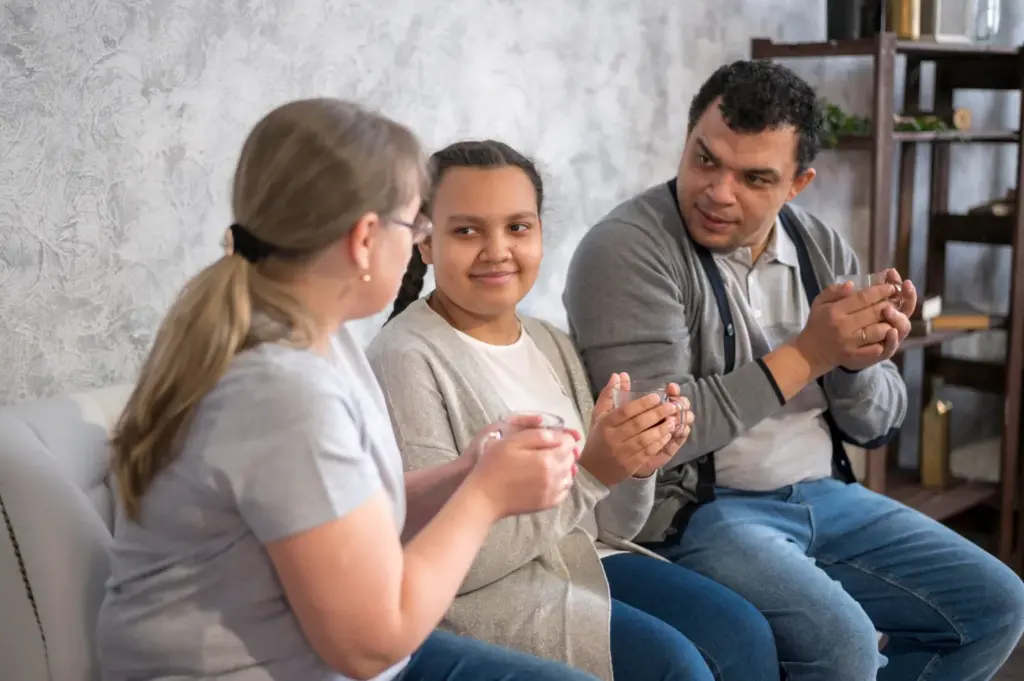Understanding how NDIS funding works for autism can make a big difference in the kind of support a person receives—and how consistently that support fits real-life needs. Autism is one of the most common disabilities supported under the National Disability Insurance Scheme (NDIS), and funding can vary widely depending on the individual’s situation. Whether the participant is a young child who needs early intervention or a teenager working on social skills and independence, the NDIS is designed to fund supports that build capacity and improve daily life.
The key thing to understand is that the NDIS doesn’t offer a fixed set of services for autism. Instead, it funds support that’s directly linked to the participant’s challenges and goals. That could mean weekly therapy, help with emotional regulation, support workers for community outings, or equipment to assist with communication. What’s funded is based on need—not diagnosis alone.
Is Autism Covered by the NDIS?

Autism is included in the NDIS as a recognised lifelong condition. It appears in List A of the NDIS Access List, which covers disabilities that usually require long-term support.
Participants with Level 2 or Level 3 autism are generally eligible without needing to provide extra reports or assessments.
- These levels under the DSM-5 often involve significant difficulties with communication, behaviour, or daily living.
- The NDIS typically accepts a formal diagnosis at these levels as enough to access support.
Level 1 autism can also be funded, but it’s not automatic.
- The NDIS will ask for more information about how autism affects everyday life.
- A functional assessment may be needed to show issues with emotional regulation, learning, or sensory processing.
The NDIS does not give funding based on diagnosis alone. What matters is how much the condition affects the person’s daily life.
- Two people with the same diagnosis might receive very different plans.
- Funding depends on individual support needs, abilities, and personal goals.
If autism creates long-term challenges in daily life, the NDIS can help. It funds practical supports that build independence and improve day-to-day function.
- This can include therapy, assistive technology, support workers, or programs that teach new skills.
- Everything depends on showing how these supports are “reasonable and necessary” for the person’s situation.
How NDIS Budgets Work for Autism Support

Once a participant is approved for NDIS funding, their plan is divided into budgets. These budgets are where funding for autism-related supports is drawn from. There are three main budget categories in an NDIS plan: Core Supports, Capacity Building, and Capital Supports. Each category serves a different purpose, and the types of services funded for autism are typically spread across all three.
Core Supports
This is the most flexible budget. It covers everyday activities and assistance that help the participant manage regular routines. For someone with autism, Core Supports might include:
- A support worker to assist with dressing, meals, or appointments
- Help with community outings, sports, or after-school activities
- Low-cost sensory items or consumables
- Assistance with preparing meals or managing hygiene routines
Core Supports can often be used interchangeably across categories, making them one of the most versatile areas of a participant’s plan.
Capacity Building
This budget is where most therapeutic support for autism is funded. It’s designed to help the participant build skills, gain independence, and improve quality of life over time. Common Capacity Building items for people with autism include:
- Speech therapy to improve communication and comprehension
- Occupational therapy for sensory integration, motor skills, or daily routines
- Psychology sessions to support emotional regulation or anxiety
- Behaviour therapy to reduce behaviours of concern
- Life skills training, such as personal safety, time management, or using public transport
Each support in this category is tied directly to a goal in the participant’s plan. The NDIS will only fund what can be justified as essential for capacity development—meaning therapists must show how each support helps improve function or independence.
Capital Supports
This category funds equipment and modifications, not services. For autism, it may include:
- Assistive technology like iPads used for communication apps (e.g. Proloquo2Go)
- Visual communication tools
- Weighted blankets or noise-cancelling headphones (if recommended by an OT or therapist)
- Safety modifications if behaviours create a risk at home
Capital Supports typically require quotes, reports, or assessments to justify the purchase. The NDIS will assess whether the item is necessary, cost-effective, and directly related to the participant’s disability.
Many families don’t realise that most therapy funding comes from the Capacity Building budget, not Core. Others are surprised to learn that sensory tools aren’t automatically funded unless clearly linked to a therapy recommendation. Understanding how these budgets work makes it easier to plan ahead, advocate for needed supports, and avoid surprises during plan reviews.
In autism-specific cases, well-prepared assessments can help link support needs to the right budget category, ensuring the participant has what they need to grow, learn, and participate more fully in everyday life.
Related: What NDIS Autism Services Are Available on the Gold Coast?
Common Services Funded for Autism

Once a participant with autism is approved for NDIS support, funding can be used across a wide range of services. These are tailored to help the person build practical skills, manage daily challenges, and improve long-term independence. The services funded depend on the individual’s age, needs, and goals—but there are many supports that appear frequently in NDIS plans for autistic participants.
Therapies
Therapy is one of the most commonly funded areas under Capacity Building. It helps build communication, sensory regulation, motor skills, and emotional resilience. Regular therapies funded for autistic participants include:
- Speech therapy – for developing communication skills, both verbal and non-verbal
- Occupational therapy (OT) – for sensory integration, routines, and fine motor development
- Psychology – for managing anxiety, emotional regulation, or executive functioning
- Behaviour therapy – often funded for behaviours of concern or support with transitions
Therapists often work together to create a coordinated plan, especially for children with higher support needs.
Support Workers
Support workers are usually funded under Core Supports and help with day-to-day tasks or community access. Common uses include:
- Assisting with daily routines (e.g. dressing, meals, appointments)
- Providing supervision during community outings
- Helping build independence at home or in public settings
- Supporting social participation or attending programs
The number of hours approved depends on the participant’s level of supervision or assistance required.
Assistive Technology and Sensory Tools
For some participants, technology and equipment help improve communication, reduce anxiety, or manage sensory overload. If backed by reports, the NDIS may fund:
- Communication devices or speech-generating apps
- Visual schedules or task planners
- Weighted blankets, sensory swings, or calming tools
- Noise-cancelling headphones or fidget tools
These supports must be linked to a therapeutic need and supported by professional recommendations.
Programs and Skill-Building Activities
Funding can also cover structured programs that build capacity over time. These might include:
- Life skills or emotional regulation groups
- Social skills programs run by allied health providers
- Early intervention sessions for young children
- School readiness or transition-to-work training
These programs are especially common in school-aged children and teenagers preparing for adulthood.
Parent and Carer Training
In some cases, the NDIS funds training for parents or carers—especially when it improves the participant’s outcomes. Examples include:
- Behaviour management coaching
- Autism-specific workshops
- Support for setting up visual routines at home
This type of funding is often included when the participant is a child and family support is essential for daily success.
Each of these services must be clearly connected to the participant’s NDIS goals and disability-related needs. Plans aren’t “one size fits all.” The more specific the need—and the stronger the supporting evidence—the more likely funding will match what the participant actually uses. For many autistic participants, a balanced plan includes a mix of therapy, community support, and skill-building services that evolve as the person grows.
What Affects the Level of Funding?
NDIS funding for autism isn’t based on the diagnosis alone. Instead, it’s shaped by how much support the person needs in daily life. Two participants with the same autism diagnosis can receive very different plans—because the funding depends on functional impact, not medical labels. Here’s what actually influences how much funding is included in an NDIS plan:
Functional Impact
The most important factor is how autism affects everyday life. The NDIS looks at areas like:
- Communication (verbal and non-verbal)
- Social interaction and behaviour
- Sensory processing challenges
- Safety awareness and risk management
- Capacity for self-care and independence
If autism causes significant challenges across multiple areas, funding is likely to be higher.
Therapist and Specialist Reports
Clear, detailed reports are essential. They provide evidence of what support is needed and why. Useful reports often include:
- Functional assessments (e.g. Vineland, PEDI-CAT)
- Recommendations for therapy frequency
- Observations about behaviour, communication, and daily living
- Justification for assistive technology or additional support workers
The stronger the evidence, the more accurate the funding.
Age and Stage of Life
Funding is tailored to where the person is in their development. For example:
- Young children often receive more therapy support under Early Childhood funding
- School-age participants might need help with classroom engagement or peer interaction
- Teens may receive support for independence, emotional regulation, or transition to work
Support at Home
The NDIS considers the participant’s home environment:
- If family or carers provide informal support, some needs may be considered “already met”
- If the participant lives alone or in shared accommodation, extra supervision may be funded
Goals in the NDIS Plan
Funding is always linked to goals. Plans with clear goals tend to attract better support:
- “Improve communication” → may lead to speech therapy
- “Join a community group” → may lead to funding for a support worker
- “Become more independent at home” → may result in life skills training
Previous Use of Funding
The NDIA looks at how the last plan was used:
- If large amounts were unused, funding might decrease
- If services were fully used and reports show further need, funding may increase
A strong NDIS plan isn’t just about ticking boxes—it’s about showing how autism impacts real daily life and what support can make a difference. Well-prepared documentation, consistent use of services, and clear goals are the most reliable ways to ensure funding meets actual needs.
Final Thoughts
NDIS funding can unlock meaningful, practical support for people with autism—but understanding how it works is essential. The scheme doesn’t offer a standard set of services for autism. Instead, it provides flexible funding based on what the participant needs to live more independently, learn new skills, and take part in everyday life.
Once a person is approved, the amount and type of funding they receive depend on real-life factors:
- How autism affects their daily functioning
- What goals are listed in their plan
- What services are recommended by allied health professionals
- How funding is used and managed over time
Therapies like speech, OT, and psychology are common. Support workers, assistive technology, sensory tools, and life skills programs are often included too. But none of it happens by default. It takes well-prepared evidence, clear planning, and an understanding of how each budget works.
For families and individuals navigating autism and the NDIS, the most important step is knowing what’s possible—and what to ask for. Funding isn’t about ticking boxes. It’s about building the right mix of support that fits the person’s life. With the right plan and the right services, NDIS funding can make daily life easier, more structured, and more empowering for people on the spectrum.
